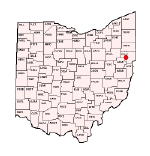|

northeastern Ohio | I hate to be "that guy", but these cups MAY not be made of the best kind of plastic for human consumption. Some plastics contain BPA, which has been reported as carcinogenic. I still drink out of a garden hose, which is probably bad for me too, so I really shouldn't stand too high on my soapbox. Here is some more info:
It's going to depend upon the type of plastic you're using, as they're composed of different chemical compounds. If you look at the bottom of your plastic cup (or dish, etc), there's normally a recycling symbol and a number. The number classifies the type of plastic it is.
You can find the plastic classification numbers here.
My opinion as an environmental chemist: if your drink cup is #2, #4 or #5, then your risk of exposure is low enough to not be an issue, as these classes of plastics do not normally contain bisphenol A (BPA) or phthalates.
You should not be using #3 (polyvinyl chloride aka PVC) for anything food related; they contain bisphenol A and phthalates; both of which are endocrine disruptors.
No. 6 is fine for storing foods, but you should not reheat foods in polystyrene. No. 7 is a 'catch all' for plastics - some of these can contain BPA.
It is nearly impossible to be completely BPA/Phthalate free; they're nearly ubiquitous in our lives: plastic wrap, the coating inside your canned beans, etc.
There are reports which suggests that BPA causes cancer, and there are many published studies regarding phthalates impacting sperm count and quality. BPA has been tentatively linked to premature on set of puberty.
Before you run off and throw out everything plastic in your house, you need to understand that you're exposed to BPA from more than just leaching from your drinking bottles & cups. BPA will degrade rapidly in air but it persists in water - this means that you're potentially exposed to BPA via your drinking water (if it's a public water supply) or through what you eat (fish) since BPA is both bioaccumulated and biomagnified.
So yes, there is a risk of BPA/phthalate leaching from your cup (or container) to your water (and thus into you), however the amount leached is most likely very small. In most of the studies where laboratory rats developed cancer, they were receiving large (1000-10000 ppm) doses of BPA through their food, or via subcutaneous injections.
It's why they pushed to have BPA and phthalates removed from baby bottles (which are still normally marked with a 7 code!) - there was a higher risk of BPA/Phthalate exposure to infants, who are normally given their milk warm. Higher dose given + consistent exposure = increased risk. | |
|


 Take a drink?
Take a drink?